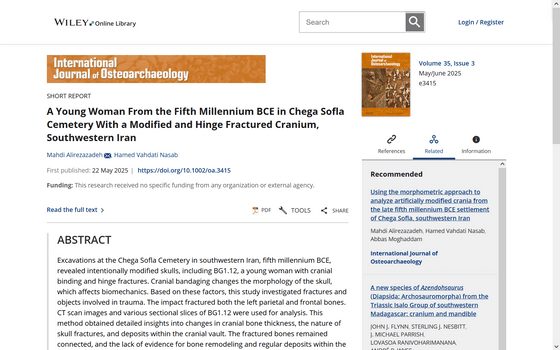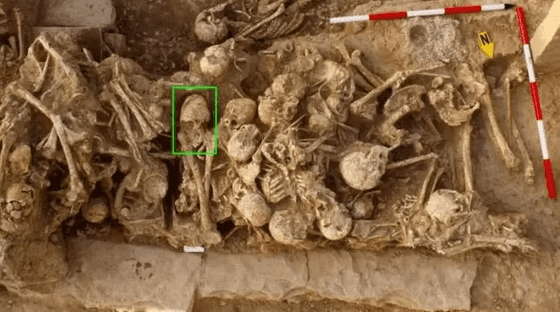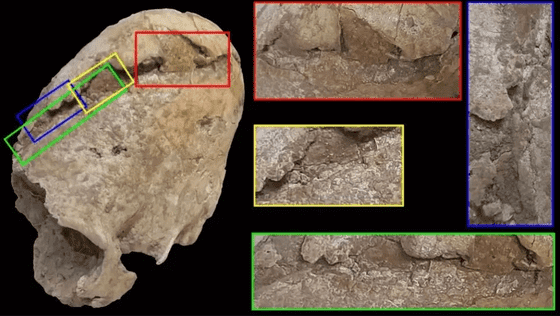6,200-year-old girl's body with cone-shaped skull unearthed in Iran

Archaeologists excavating an ancient cemetery in western Iran have discovered a severely deformed human skull that appears to be the result of a culture that used bandages to slim down the head.
A Young Woman From the Fifth Millennium BCE in Chega Sofla Cemetery With a Modified and Hinge Fractured Cranium, Southwestern Iran

Teen girl from 6,200 years ago with cone-shaped skull unearthed in Iran
'Cone-headed' skull from Iran was bashed in 6,200 years ago, but no one knows why | Live Science
https://www.livescience.com/archaeology/cone-headed-skull-from-iran-was-bashed-in-6-200-years-ago-but-no-one-knows-why
Hamed Vahdati Nasab, an archaeologist at Tarbiat Modares University, and his team discovered a cemetery containing evidence of a family funeral while investigating a site in western Iran. The cemetery contained the remains of several people, one of which contained a cone-shaped skull.

The skull is believed to have belonged to a woman under the age of 20. Research has shown that in some cultures, children's heads were tightly bound with bandages until they reached adulthood, and it is believed that the skull found this time was elongated in the same way.
Nasab and his colleagues performed CT scans of the skull and found that many of the bones were thinner than normal, putting the individual at higher risk for head trauma.
In addition, evidence of head trauma was found on the skull, suggesting that the woman died from some external cause: the skull showed signs of injury from a wide object, but it is unclear whether someone struck her or she died in an accident.

In addition, other skulls that had been corrected were found in the cemetery investigated by Nasab and his colleagues, and it was also found that people who had been corrected and those who had not been corrected were buried in the same place. Because the woman with the trauma was buried in a communal grave with many other people, the remaining bones have not been identified, and the woman's final moments remain a mystery.
'This young woman's final moments were the result of tremendous force delivered by a wide object,' Nassab and his team wrote. 'Although her skull was weaker than normal, the blow was likely so violent that it would have fractured even a normal skull.'
It is known that the culture of deforming skulls also existed in Japan.
The 'Hirota people' who lived on Tanegashima 1,800 years ago had the custom of deliberately deforming the skulls of infants - GIGAZINE

Related Posts:
in Posted by log1p_kr






